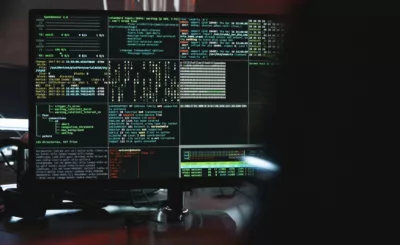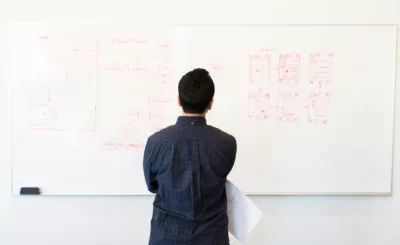The most widespread and common greeting in the American culture is the handshake. Handshakes are shared between anyone meeting for the first time, and at the end of business deals or conversations.
I spend a good deal of time around 2nd and 3rd generation Korean-Americans. In Korean culture, like many Asian cultures, the handshake is replaced by bowing. In these transitional immigrant generations, the bow and the handshake have been merged into one awkward action.
I was recently walking through the reception line at the wedding of 2 second generation Korean-Americans and I went to greet the 1st generation parents. I was going to try to be respectful and offer a bow instead of a handshake, but just as I began to bend, a large hand was thrust out in front of me. I felt lucky that I didn’t end up with the guy's finger in my nose.
Bookend Handshakes
One of the things I immediately noticed as I began working with the craftsmen at 8th Light is that everyday I walked into the office, every member of the team shook my hand. As each team member left for the day, he shook the hand of everyone who was left.
I expect this on the first day, as you always shake hands with everyone on your first day. On the second day, I thought maybe they had all forgotten that they met me yesterday. As I realized that this would continue, it really made me start thinking.
As I went to work with another team for a little while I came to really miss the handshakes. I’d walk in the morning and maybe get an eyebrow flash from my teammates. Or a “hello” would come if I was really lucky.
I decided enough was enough, so I just started shaking hands. At first, I got some really weird looks and was left hanging a few times. The looks seem to ask “Why are you shaking my hand, we see each other every day.” But slowly it started to catch on. My teammates began to expect a handshake from me at the start and end of each day.
What Handshakes Communicate
Here’s what I think these bookend handshakes do for a team. First, believe it or not, a handshake becomes an intimate gesture. It communicates genuine care and concern for each other. To me it’s a physical expression of the XP value of Humanity.
Second, it communicates respect. Sometimes design and project discussion can get very heated, especially if you are working with a passionate group of people. If your days begin and end with a handshake, everyday is bookended by a statement of mutual respect.
There is a proverb that exhorts people to “Not let the sun go down on your anger.” That handshake is a way to let go any residual anger from the day and commit the next to dealing with each other with respect.
Third, It’s an honest statement about the hours you are working and the time you are putting in on the project. In a handshake-free environment, if I’ve had to leave the office early, I’d usually try to sneak out without anyone noticing.
At the time I was in an office culture that promoted flexible hours, but you always felt like people were watching you to make sure you were still putting in your hours. I always put my time in, but because I sometimes played with my schedule quite a bit, I was always afraid that someone would perceive my time poorly.
Conclusion
When an handshake begins and ends your day, you are being direct and up front about your time. You are communicating at the start of the day “I’m here, I’m ready to work” and at the end of the day “My day is over.”
There are no apologies, no sneaking in or out, and no elaborate time-tracking system. Your teammates trust that you are working as much as you should be and you are not likely to try and cheat your company or your team out of your time week-to-week.
Try it in your team. It’s a morale boosting behavior that will cost a team nothing to implement, but will be one baby step to improving the strength and productivity of the team.





